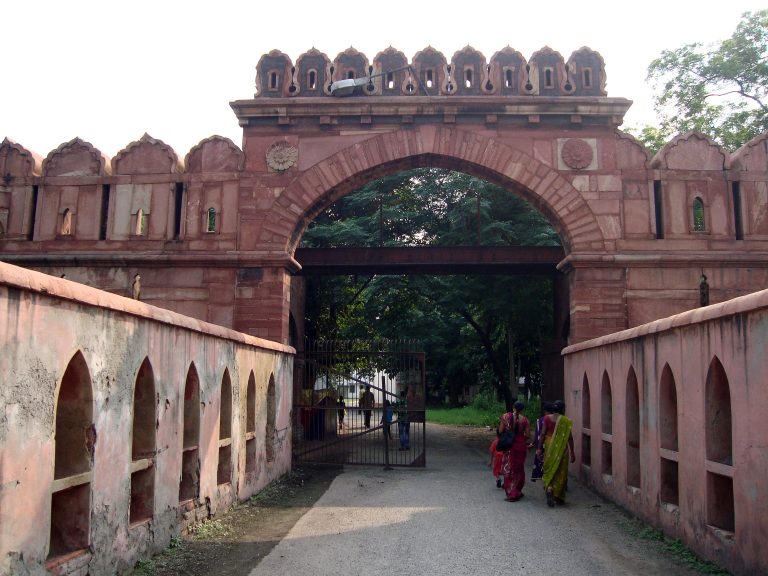Introduction and historical background of Salimgarh Fort
Salimgarh fort was built in 1546 AD, in Delhi, in a former island of the Yamuna river by Salim Shah Suri. During the Mughal period, in later years, while building the Red Fort and Shahjahanabad, several Mughal rulers including Emperor ShahJahan who is credited with completing Shahjanabad, in 1639 AD had camped at this fort. Also Humayun had camped at this fort for three days before launching his successful attack for recapturing Delhi. Aurangzeb converted the fort into a prison. This practice was perpetuated even by the British who took control of the fort in 1857.
The Fort is a part of the Red Fort Complex. The complex was declared as an UNESCO world Heritage site in 2007, which obligates Archaeological Survey of India to ensure well, planned conservation measures.
The location
The location chosen for building the fortification of Salimgarh was in the Delhi plains, surrounded by the Yamuna River on one side and the Aravalli range of hills on the other side. This topography of the land with the rock exposures at the Fort’s location, with a favorable link with the northeast ridge and the main mosque Jama masjid situated in front of it, was visualized as an ideal setting that provided the needed protection against erosion by the Yamuna River. It was also obvious that these two factors would provide as a formidable barrier for invaders to penetrate into Delhi, as such a setting would force the invaders to follow the river course which was difficult during those times. Keeping these advantages in mind the Salimgarh Fort was built
The story
During the British rule, the Sepoy mutiny of 1857 this fort was the ground where of lot of war activity took place. During the Uprising, Emperor Bahadur Shah Zafar operated from this Fort. During August and early September 1857 he held meetings at the fort on war strategy. He also watched, from the ramparts of the fort, artillery fire aimed at the British army z těchto webových stránek. After the Uprising was put down, The British continued using it as a prison and kept its artillery units here after the war of 1857. The leaders of Indian National Army were imprisoned here in 1945. The barracks where soldiers were kept as prisoners have been converted into their memorials. The memorial houses INA uniforms, personal belongings and some photographs have been placed at the site museums present inside the complex
My observation
The Fort’s thick walls are built with rubble. From the time it was built, the fort structure has went through several stages of repair and is right now also a lot construction and reconstruction for preservation and conservation purposes is taking place there. An Arch bridge links it with Red Fort on the north eastern side, and was constructed during Bahadur Shah Zafar’s reign, hence the gate is known as Bahadur Shah Gate. The gate is built of brick masonry with selective use of red sandstone also. Surrounded by solid long walls, the Salimgarh Fort is polygonal in shape and even though its magnificence has been reduced to ruins now, it remains an important landmark of the grandeur of Indian history. The fort has been given to the CRPF which now occupies it.
After talking to a few locals, they told me that the place is haunted by the legends of The Ghosts haunting the fort area and several stories are narrated in this for the same. One of them relates to Zebunnisa (Aurangzeb’s daughter) wearing a black veil singing poems composed by her, on moonlit nights. It is also mentioned that the moans and groans of the soldiers of INA who were tortured and who died here are heard in the vicinity. Thus, this fort established a strong link between the Mughal rule and the British Rule

